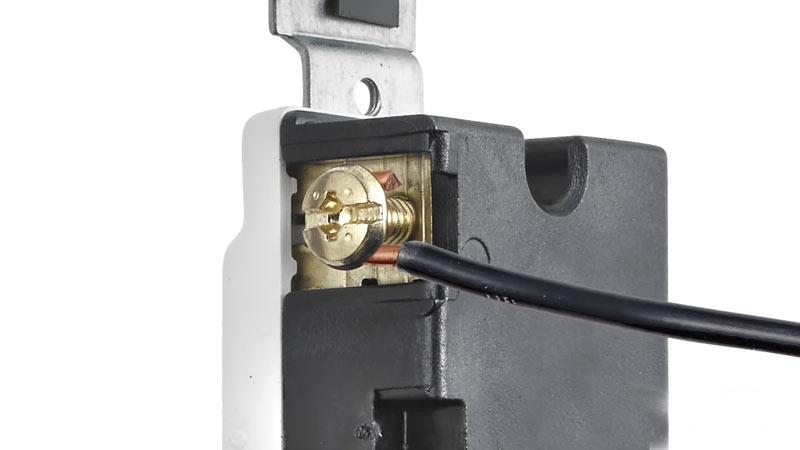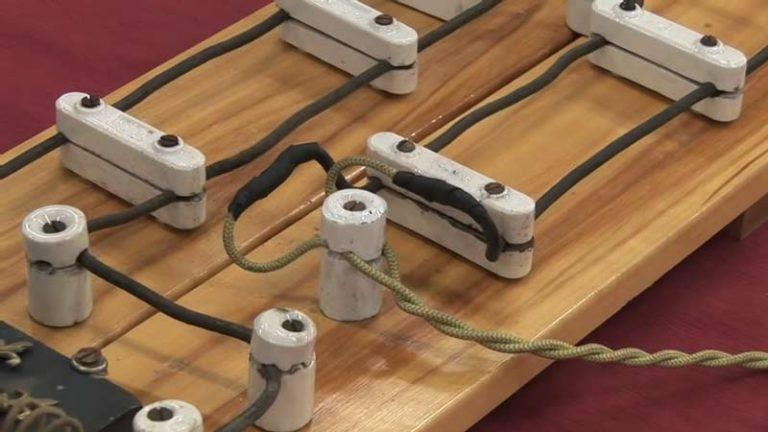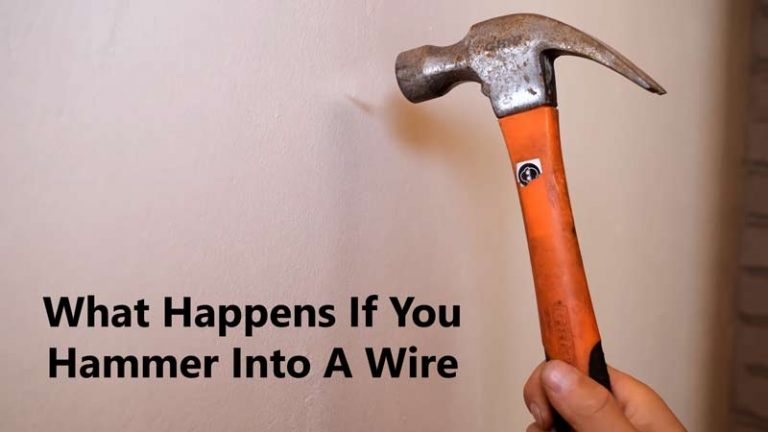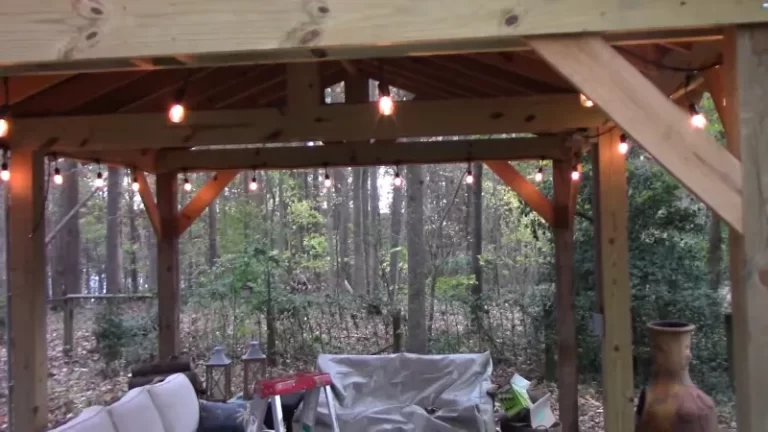Do You Need A Neutral Wire For 240V?

The neutral wire is not needed for a 240V load. Most 240V appliances have some 120V loads such as timers or control circuits which is why neutral is usually provided, “just in case.” The only time 240V only load is commonly seen in residential settings would be well pump motor.
In a 120V system, one hot wire carries 120 volts. In the 240V system, both cables are live. They will bring 120V current. Neutral is needed when the device has components, like controls or motors, that run on 120v.
You'll Learn About
Understanding 240v
In homes, we usually deal with 120V electricity which is enough to power most of our electronic appliances like TV, fridge, washing machine, etc. However, some heavy-duty electrical devices such as air conditioners and ovens need more than 120V power supply.
So, they require a higher voltage-240 volt (V). There is a difference between regular home electricity and 240 volts along with the types of appliances that require it.

How Does 240 V Differ From Regular Household Electricity?
Regular typical home outlets are capable of delivering up to around 107–127 Volts whereas the series circuit that supplies certain type circuits can deliver double the normal amount—between 220 – 250 Vs.
More precisely speaking for AC Supply Voltage – US houses often have neutral wires at ground potential. Unlike industrial establishments, their transformers step down high voltages supplying Single Phase or Three phase equipment in installed units.
These are ready for operation.
The voltage capacity also means a smaller wire size can be used. Because less current needs to flow through them. There is an inversely proportional relationship between resistance (power required) vs area/cross-section (transmission medium capability).
Types of Appliances That Utilize/require 240v
Types of appliances that utilize/require 240v: Appliances requiring larger amounts of energy typically use two hot bus bars instead of one found on common output sockets or standard light switches.
Dryers, stoves, and hair dryers among others fall under this category.
Significance
It might be difficult making sense of how specific solar panels could deliver an equivalent amount of watts but using only half what you’re normally accustomed to out of plugs.
Several gadgets intended exactly for usage will always run much smoother and faster when supplied with their appropriate amperage/voltage described by the manufacturer.
This leads to gain economy pluses longer life cycles. Ideally, consulting a professional decision would avoid any chance of a hazard ratio. Sometimes you should rely on proper qualifications from jurisdictional bodies that regulate electrical installations.
240 volts is a higher voltage power supply than what we generally use at home (120 V). Because of its increased energy capacity, 240V powers larger appliances. Such as electric water heaters and air conditioning units or any household device designed to draw power for substantial amounts of time.
The impartial wire commonly associated with the former transforms setup affects models in varying ranges around the world. This needs the expert’s most skilled workers when it comes to configuring proper installation setups within growing residential demand.
Functions of Neutral Wire in Electrical Circuits
In an electrical circuit, the neutral wire plays a crucial role by completing the path for current flow and providing a safe return pathway for excess current1.
240v Load and Need for Neutral
For a 240V load, there is no need for a neutral wire as it receives power from two hot wires (phase), which are out of phase with each other. However, most appliances with high voltage needs also have some low voltage loads.
Such as timers or control circuits that require only one hot wire along with neutral to function properly.
Why Do Some Electrical Devices Not Need a Neutral?
Some electrical devices can operate without using the neutral. Because they do not receive their operating power from alternating currents as many household circuits do.
In this case, these electronic devices use direct currents instead. There only positive & negative terminals will be required. So, in those cases, we don’t need to provide any neural(wire).
Multiple Loads Circuit
In circuits having multiple loads, Neutral has equal importance as Phase (Active). The Current flows through every device connected in parallel. So even if one device stops working, it doesn’t stop affecting others’ greater lifespan.
For example: if different resistances (light bulbs) are connected purely (End To End).
If one fails open, the majority amount of the current passes through small resistance. Because Current behaves like water molecules – Moves towards lower Levels.
This implies much higher values than actual ratings. Thus, we should avoid connecting Home Appliances end-to-end.
So when all components i.e. hot wires (shared but different dependent on phases), neutral, wiring compartments, and earth ground are installed correctly. Then we get a High-efficiency home system immune against fluctuations and hazards.
The problems are created by Over High Voltage due to No Lightning Arrestors or Improper Earthing conditions.
The presence of the neutral wire provides safer operation. This allows the efficient functioning of electrical appliances. Finally, making it a necessary component in any electrical circuit.
Neutral Wire for Appliances Requiring Both Voltages
In residential settings, there are several appliances that require both voltages for their proper functioning. These appliances include dryers, ranges, ovens, and air conditioners with heating options.
Need for Neutral Wiring in Appliances Requiring Both Voltages
Consequences of Not Having Neutral Wire
If an appliance requires both 240V and 120V to operate but doesn’t have a neutral wire connected or available to it when required. The likely consequences would be malfunctioning control circuits.
It can cause issues like unable to set timer functions or failure in controlling the temperature.
Importance of having a Neutral Wire
Having a neutral wire is important because it provides voltage stabilization. This helps protect sensitive electronics from damage due to high voltage spikes or surges by completing the grounding circuit.
The main reason why some home appliances requiring multiple voltages might need power through the non-device leg (like a hot Y terminal on an A/C Compressor motor).
Thus, the lead must come back through another conductor so that every load receives its own effective return path. They share common points where imbalance gives rise.
In practice, between series loads without including ‘heavy’ method provisions such as transformers, one finds breakage sympathetic current flow even if individual wires handle slight imbalances well.
Examples of Home Appliances That May Require Both Voltages Include:
Dryer
Dryers typically use either gas or electricity as a heat source. This depends upon preference & availability at the location. They are designed into wiring machinery feeding its complexity.
Elements are chosen carefully taking tolerance level factors into consideration.
Range/Oven
Ranges/ovens employ resistive heating elements powered via AC circuitry. This is inside the existing kitchen area. The suitable arrangement is decided based on wattage and technical model constraints.
The plug, and range receptacle should conform according to code stipulations. Devices should be kept away from any water sources to avoid dampness and faulty sparks, and issues.
Air Conditioners
Air conditioners operate more efficiently when powered by 240V. This is as opposed to being run through a step-down transformer. Although, when not actively cooling or heating it still needs power.
This is in the form of a low-voltage signal from a thermostat. This activates, and deactivates compressor motor operations.
To avoid technical issues with appliances requiring both voltages neutral wiring must be present. This is throughout household circuits’ design because this type of wiring arrangement can provide stabilization.
This is against high-voltage spikes/surges and protects sensitive electronic components susceptible to damage.
How to Do 240 Volts Work Without a Neutral?
The neutral conductor is not needed for a 240V device. The center tap of the coil provides half the voltage. Only two ungrounded conductors are required to supply power.
One wire carries 120V and another wire carries an opposite phase with 120V.
Together, they create a potential difference of 240 volts between them. The alternating current changes direction in each wire at a frequency of 60 hertz per second.
This creates an oscillating magnetic field that powers devices connected to it. The hot wires carry electricity from one side (phase)of the electrical panel board.
Electricity flows into appliances &back through the other side(phase)to complete the cycle.
This system is called Single Phase Electrical System where Neutral plays no role.
Do You Need a Neutral Wire for 220v?
A neutral wire is not required for 220V electrical systems. Each pulse uses the off phase of the other side as a neutral connection. The AC current goes back and forth between hot bars without needing a separate return path.
This setup makes it more efficient than using single-phase power with two wires plus ground. Three-phase systems also do not require a neutral since they use three live wires in alternating cycles.
Without proper grounding, there can be safety concerns or damage to equipment during surges or faults.
A double-pole circuit breaker still needs to be installed to disconnect both sides simultaneously if needed for maintenance or emergencies Using low-voltage DC power instead could potentially eliminate the need for either an extra wire, but that would come with its own limitations and challenges.
The system relies on balanced loads so unbalanced appliances may cause issues. Wiring should always follow local codes, and qualified electricians must deal with electricity.
There won’t be any problem with flowing electricity if the neutral wire is disconnected.
Do You Need 3 Wires for 240V?
In the US, residential service for 240V requires three wires. One of the wires is used as ground while others are hot. The two hot wires have a phase shift of 180 degrees.
Most devices use only one of these hot wires to consume power (120V).
Heavy appliances may require both hot wires to work properly at full capacity (240V). If only one wire is connected to a heavy appliance, it might not function correctly or efficiently.
A neutral wire is also required in some cases in addition to ground and two hots. A dedicated circuit breaker must be installed for each high-wattage device recharged from outlets using this wiring method.
This type of electrical configuration provides higher voltage with lower current which reduces energy loss due to resistance along the way and makes efficient consumption possible.
Voltage fluctuations can still occur due to changes on either side and imbalance between supply-demand establishments.
Does 3 Phase 240v Have a Neutral?
Neutral wires are not required for 3-phase circuits. The sum of currents on the energized lines must be zero. This is due to the nature of how three-phase electricity works.
A neutral wire could actually disrupt this balance and cause problems.
In a balanced system, all three phases carry equal amounts of current at all times. If one phase experiences more or less than its fair share, it becomes unbalanced and problematic.
Without a neutral wire in place, there’s no risk that this will happen because power can only flow between pairs – never through the middle. The voltage alone does not explain what happens with electric motors.
Curious forces play an important role when building motors/running them. Phase Loss Is Critical. With Three-Phase Motors And Machinery Factors such as vibration from traveling vibrations also may cause deterioration over time.
Final Words
The neutral wire is not required for a 240V load. However, most 240V appliances have some 120V loads such as timers or control circuits which is why neutral is usually provided.
Neutral is needed when the device has components that run on 120v. This information can help you understand when the neutral wire is needed for a 240V circuit.



